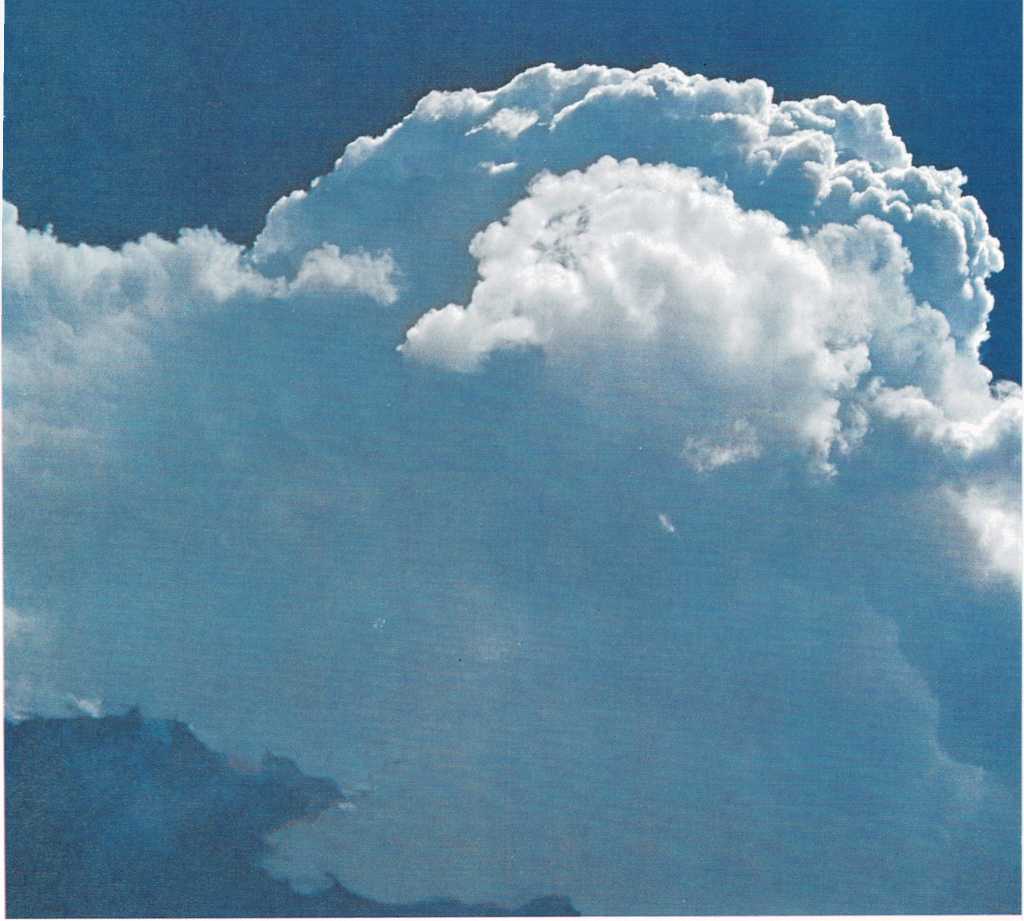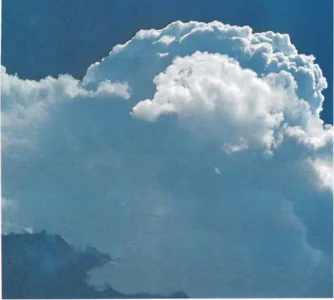Floating water in the air
Clouds. Sometimes they look like big gobs of whipped cream in the sky,
and sometimes like soft, floating feathers. Sometimes they’re white as
milk, and sometimes as dark and gloomy as an angry frown. But what are
clouds? Where do they come from?
A cloud is simply billions and billions of tiny, tiny droplets of water
or ice all clustered together. And the water that makes clouds comes
from the earth.
When you perspire on a hot, sunny day, you’re helping to make a cloud.
When a mud puddle dries up in the sunshine, it’s going to become part of
a cloud. Every day, the heat of the sun dries up tons and tons of water
from everywhere on earth—from lakes and rivers, from the ocean, and
from mud puddles, plant leaves, and perspiration. All this water is
turned into water vapor, which is water in the form of gas. This gas
goes floating up into the air.
The water vapor is warm from the sun’s heat. But as it rises higher and
higher, it begins to cool. When it gets cool enough, it turns back into
water or ice. Then, tiny droplets form around tiny, tiny bits of dust in
the air. These droplets make up the clouds.
Some clouds are all water, some are all ice, some are a mixture. You
might think the water and ice would be so heavy it would fall to the
ground, but the droplets are so very tiny that even the slightest wind
is enough to keep them floating through the air. However, sometimes
things happen that make many droplets collect together and become large
drops. Then the cloud falls to earth—as a shower of raindrops.


